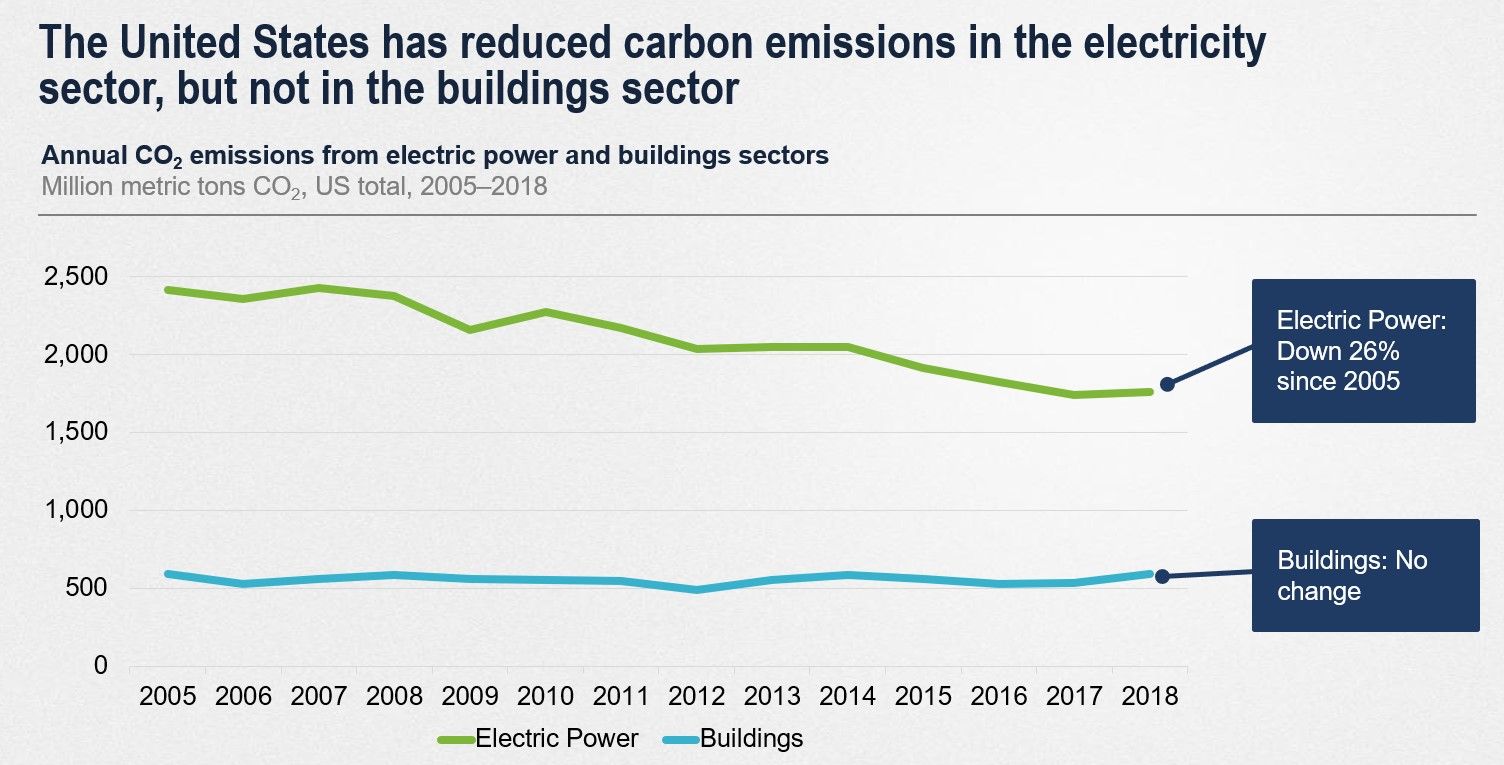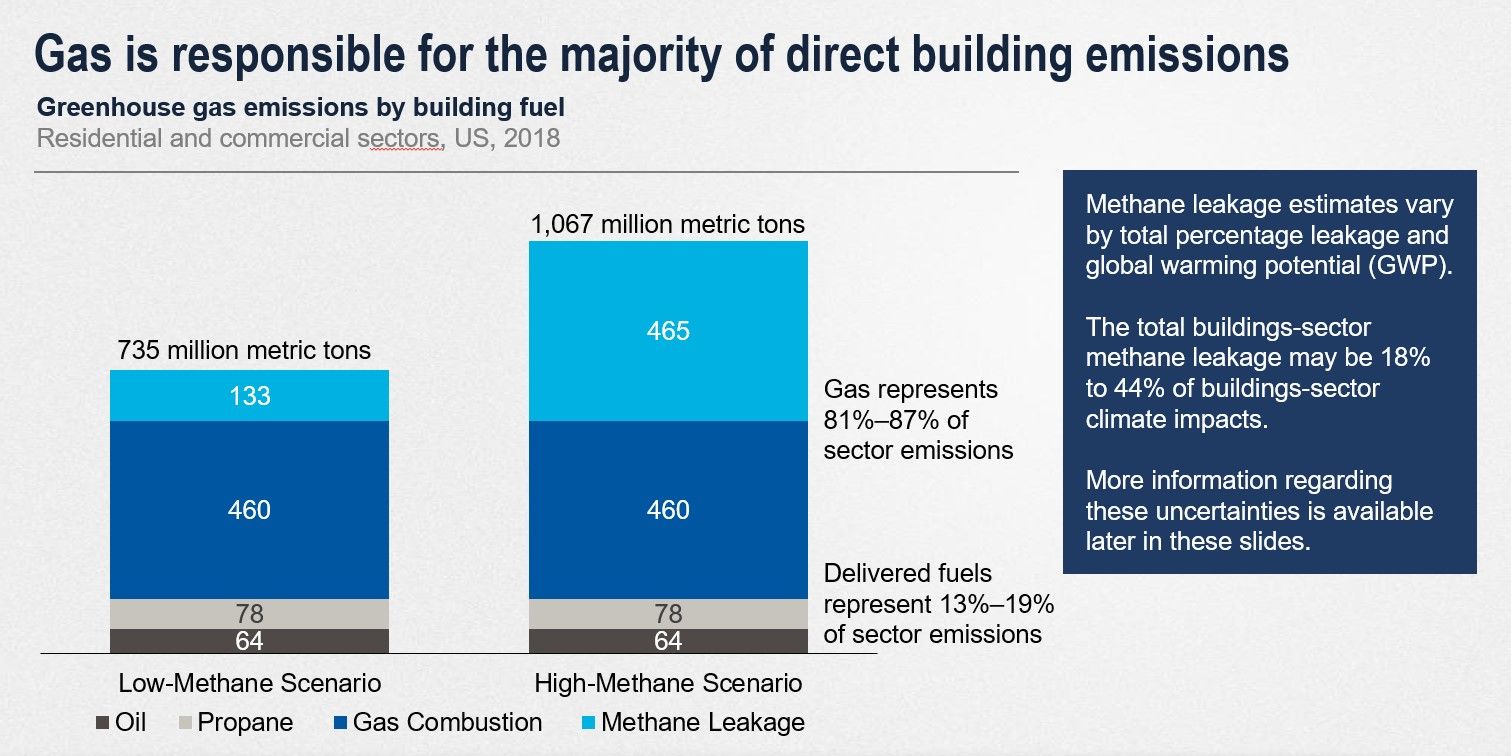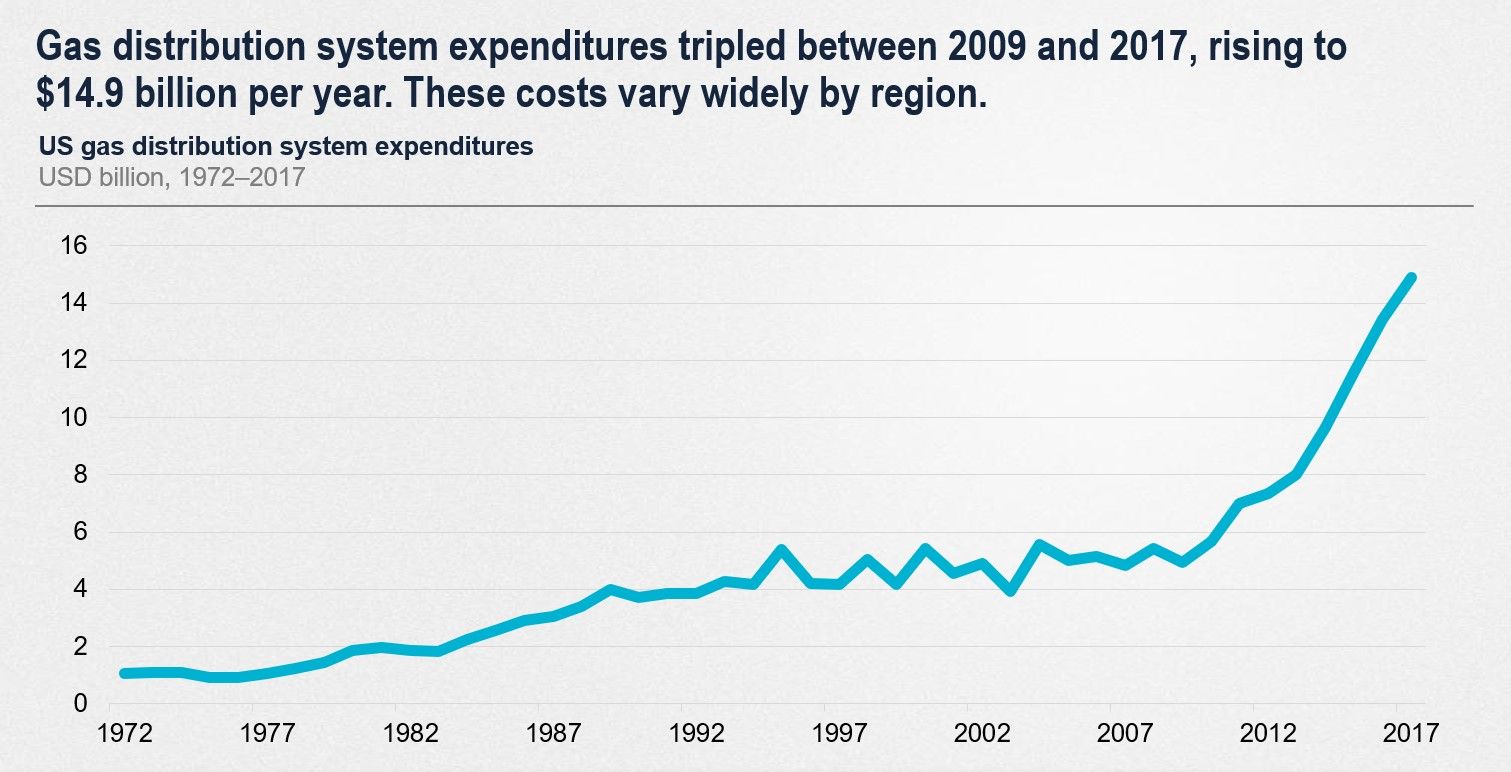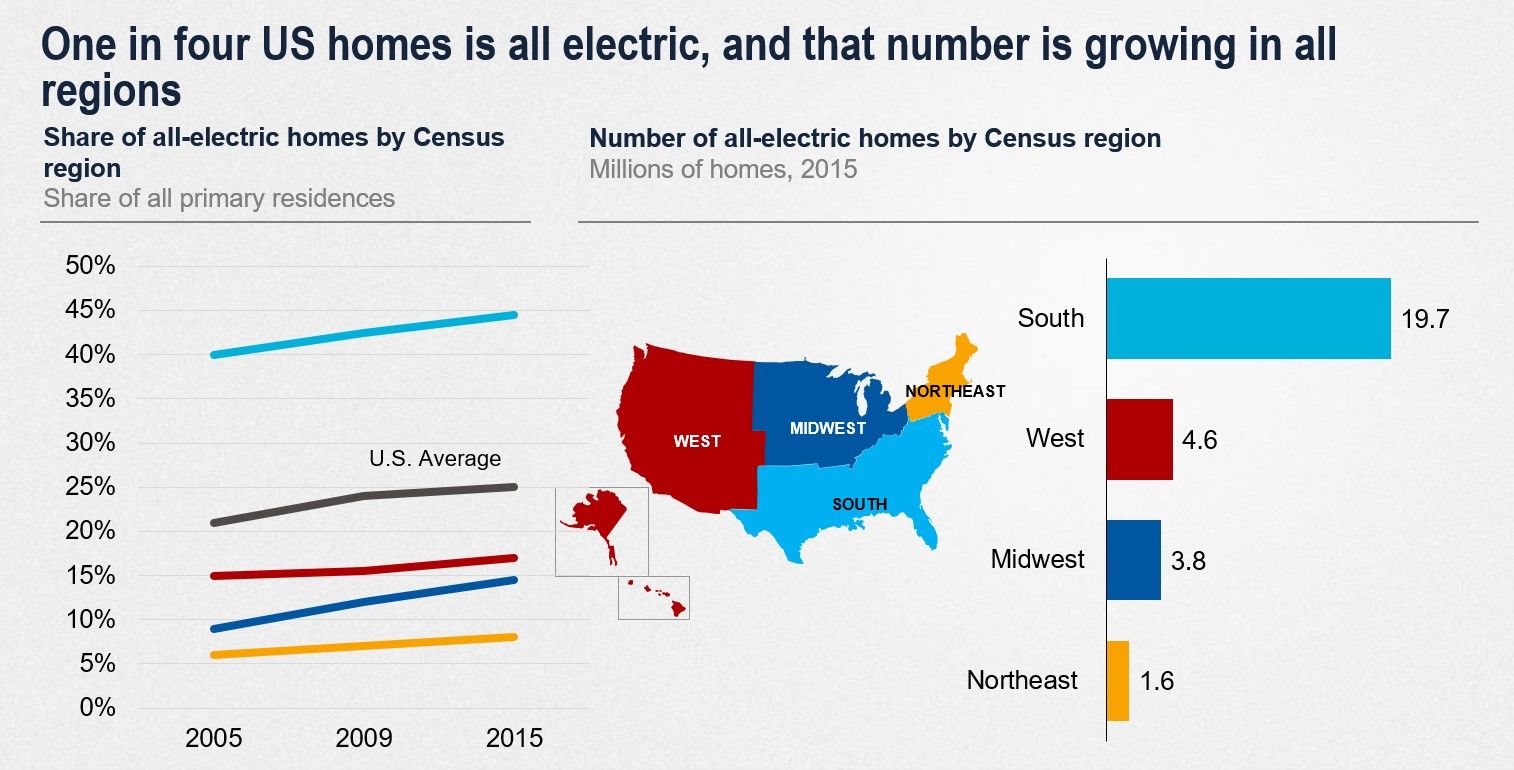Fossil fuels, primarily gas, are a fixture in millions of American homes and businesses, but the building sector’s climate impact hasn’t received the same scrutiny as coal and gas in the power sector or oil in the transportation sector.
Fortunately, that’s changing.
In 2019, more than 20 California cities jump-started a building decarbonization movement when they took steps to eliminate gas from new buildings, ensuring they will instead be constructed with electric appliances such as heat pumps. At the end of the year, Brookline, Massachusetts joined the movement, and more cities around the country are expected to enact electrification measures in 2020.
The gas industry is mobilizing to oppose these measures, setting the stage for local battles across the country. 2020 could mark a turning point for building-sector emissions, according to a new Rocky Mountain Institute analysis.
Here are five charts illustrating why a growing number of cities and states are turning their attention to fossil fuels in buildings and why the electrification movement is critical to addressing climate change.
The U.S. Electric Grid Is Getting Cleaner, But Not the Buildings Sector

Thanks to the rapid decline of coal generation and the growth of wind and solar power, the electric grid is quickly getting cleaner. As a result, the U.S. electric sector reduced its carbon emissions by 26 percent from 2005 to 2018. Preliminary estimates for 2019 indicate that this trend is accelerating, with another 10 percent drop just from 2018 to 2019.
Building-sector emissions, on the other hand, remain largely unchanged despite energy efficiency gains. This is because more than half a million new customers are added to the U.S. gas system each year.
In order to bend that curve and cut direct building emissions, states and cities will have to pursue policies that end the expansion of new gas infrastructure and accelerate the transition to electric heating and cooking.
The Majority of Direct Building Emissions Are Coming From Burning Natural Gas

While oil is still used for heat in many Northeastern states, and propane is used in rural areas around the country, gas produces the majority of direct building emissions in the U.S.
Between the direct emissions from burning gas and the methane that leaks throughout the supply chain, fossil gas accounts for more than half a billion tons of annual emissions (81 to 87 percent of overall direct building emissions), making it an important target for communities looking to cut carbon emissions, particularly in states that have already made significant progress cleaning up their electricity supply.
Most of the Top-Emitting States Have Ambitious Climate Change Goals

Most states with the highest proportion of emissions from burning fossil fuels in buildings also have ambitious climate change targets — generally 80 percent emissions reductions by 2050 or greater. This dramatic decarbonization pace means it’s simply not possible for these states to meet their climate goals without rapidly electrifying buildings.
To get a sense of the scale of this challenge, consider New York, America’s top state in terms of gas consumption in buildings and direct building emissions. To meet the targets laid out in the state’s ambitious new climate change law, RMI analysis estimates that New York will have to decarbonize 1,600 commercial buildings and 67,000 residential units per year between now and 2030.
Gas Infrastructure Spending Is Rising Rapidly

New spending on gas infrastructure tripled from 2009 to 2017, rising to $14.9 billion per year, even as the overall U.S. gas distribution system continues to get older.
In many places including Chicago and Massachusetts, new programs to accelerate pipe replacement are imposing high costs on customers. Not only are these infrastructure investments costly and time-intensive, but they’re also incongruent with climate change goals because they lock in decades of new emissions.
The utilities installing these new pipes (and the customers who use them) continue to build up their exposure to the financial risk that they will be holding un-depreciated assets that are no longer useful in a climate-aligned future.
Policies that accelerate the transition to all-electric homes and buildings can put cities on a path to retiring these expensive assets rather than replacing them.
All-Electric Homes Are on the Rise Across the Country

While all-electric buildings may be the future of heating, cooking and maintaining a comfortable indoor environment, they’re already far more common — and more affordable — than most people realize. One in four U.S. homes is all-electric, and that number is rising in all regions, with the highest overall percentage in the South.
Even in colder climates in the Midwest and Northeast, millions of homes are already all-electric and fossil-fuel-free. Thanks to recent advancements in heat pump technology, the devices are now far more effective at heating in colder environments. Cold-climate states like Maine and Vermont have implemented programs to develop heat pump markets, spurring sharp increases in deployment.
This confluence of economic, climate, technical and policy trends will make 2020 a big year for building electrification.
***
Mike Henchen is a manager at the Rocky Mountain Institute.




